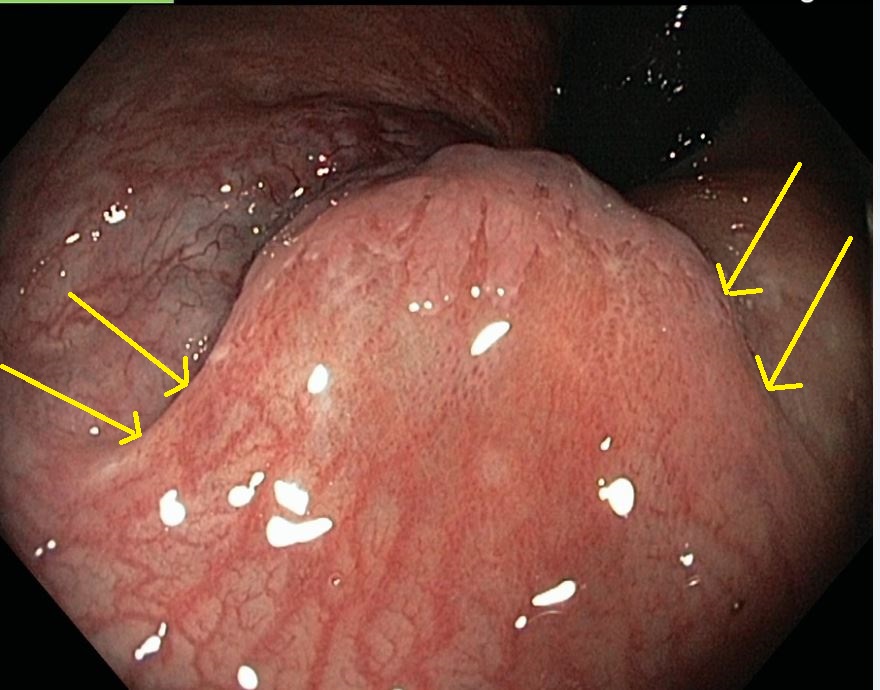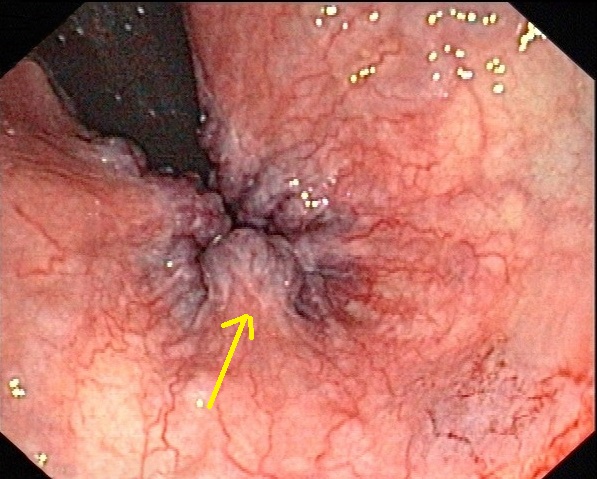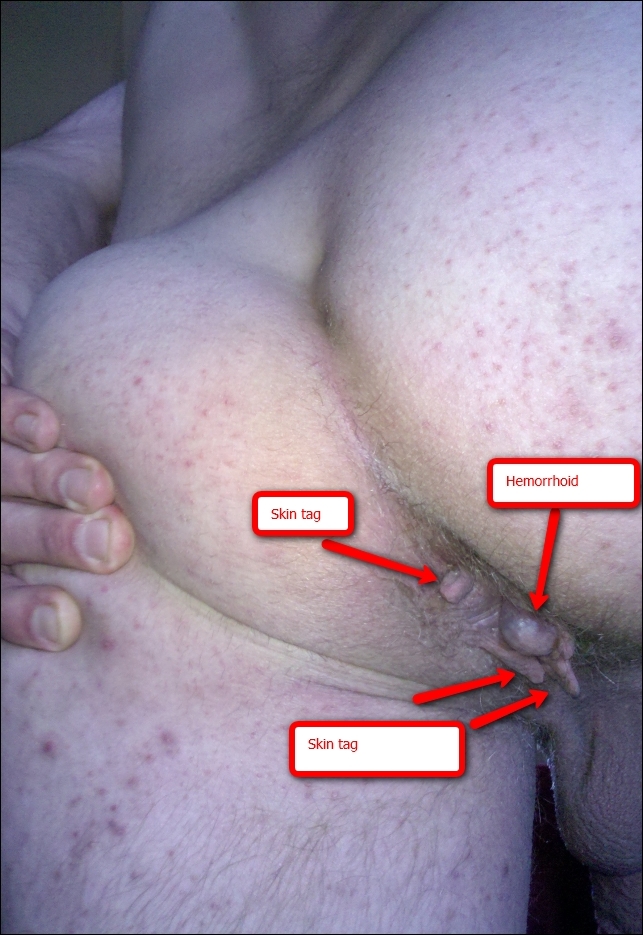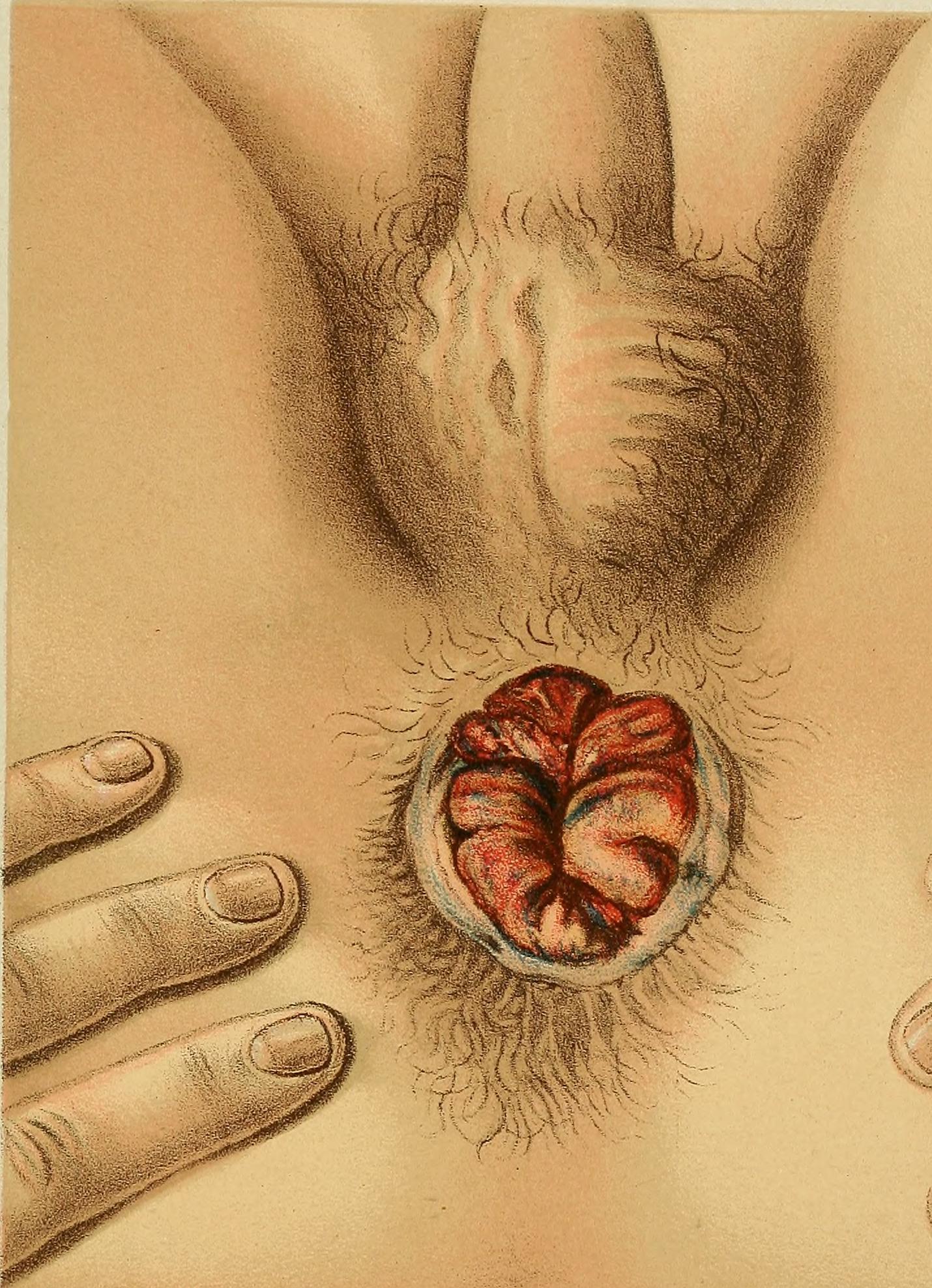Hemorrhoids pathophysiology: Difference between revisions
Jump to navigation
Jump to search
m (Bot: Removing from Primary care) |
|||
| (3 intermediate revisions by one other user not shown) | |||
| Line 1: | Line 1: | ||
__NOTOC__ | __NOTOC__ | ||
{{Hemorrhoids}} | {{Hemorrhoids}} | ||
{{CMG}}; {{AE}}{{AY}} | {{CMG}}; {{AE}}{{AY}} | ||
==Overview== | ==Overview== | ||
| Line 19: | Line 19: | ||
*Increased tone of the [[internal anal sphincter]] causing the feces to press the hemorrhoid against the muscle and thus decreasing [[venous return]] and aggravating the symptoms.<ref name="titleHemorrhoids">{{cite web |author=Burney RE |title=Hemorrhoids |url=http://www.med.umich.edu/1libr/aha/aha_hem_crs.htm |date=November 2005 |publisher=University of Michigan Health System |accessdate=2007-11-28}}</ref> | *Increased tone of the [[internal anal sphincter]] causing the feces to press the hemorrhoid against the muscle and thus decreasing [[venous return]] and aggravating the symptoms.<ref name="titleHemorrhoids">{{cite web |author=Burney RE |title=Hemorrhoids |url=http://www.med.umich.edu/1libr/aha/aha_hem_crs.htm |date=November 2005 |publisher=University of Michigan Health System |accessdate=2007-11-28}}</ref> | ||
*The [[Circulatory anastomosis|arteriovenous]] anastomosis may play a role in the development of hemorrhoids. This is supported by the fact that some hemorrhoids improve after ligating the connecting arteries.<ref name="titleHemorrhoids during pregnancy: Treatment options - MayoClinic.com">{{cite web |author=Harms R |title=Hemorrhoids during pregnancy: Treatment options |url=http://www.mayoclinic.com/health/hemorrhoids-during-pregnancy/AN01720 |date=Nov 3, 2007 |publisher=MayoClinic |accessdate=2007-11-28}}</ref> | *The [[Circulatory anastomosis|arteriovenous]] anastomosis may play a role in the development of hemorrhoids. This is supported by the fact that some hemorrhoids improve after ligating the connecting arteries.<ref name="titleHemorrhoids during [[pregnancy]]: Treatment options - MayoClinic.com">{{cite web |author=Harms R |title=Hemorrhoids during pregnancy: Treatment options |url=http://www.mayoclinic.com/health/hemorrhoids-during-pregnancy/AN01720 |date=Nov 3, 2007 |publisher=MayoClinic |accessdate=2007-11-28}}</ref> | ||
*The redundant bulging [[mucosa]] is easily injured causing bleeding. The blood is usually bright red reflecting high oxygen content due to the proximity of [[AVA|AV anastomosis]]. | *The redundant bulging [[mucosa]] is easily injured causing bleeding. The blood is usually bright red reflecting high oxygen content due to the proximity of [[AVA|AV anastomosis]]. | ||
| Line 38: | Line 38: | ||
==References== | ==References== | ||
{{Reflist|2}} | {{Reflist|2}} | ||
{{WH}} | |||
{{WS}} | |||
[[Category:Gastroenterology]] | [[Category:Gastroenterology]] | ||
[[Category:Surgery]] | [[Category:Surgery]] | ||
[[Category:Needs overview]] | [[Category:Needs overview]] | ||
Latest revision as of 22:03, 29 July 2020
|
Hemorrhoids Microchapters |
|
Diagnosis |
|---|
|
Treatment |
|
Case Studies |
|
Hemorrhoids pathophysiology On the Web |
|
American Roentgen Ray Society Images of Hemorrhoids pathophysiology |
|
Risk calculators and risk factors for Hemorrhoids pathophysiology |
Editor-In-Chief: C. Michael Gibson, M.S., M.D. [1]; Associate Editor(s)-in-Chief: Ahmed Younes M.B.B.CH [2]
Overview
Hemorrhoids develop due to a combination of genetic predisposition (weak rectal veins) and certain diet and defecation habits.
Pathophysiology
- Hemorrhoids can be internal and external.
- Internal hemorrhoids are located above the dentate line and they occur due to dilatation of the superior hemorrhoidal plexus.[1]
- The connective tissue over the superior hemorrhoidal plexus is innervated via visceral nerves and thus it is pain insensitive.
- External hemorrhoids are located below the dentate line and occur due to dilatation of the inferior hemorrhoidal plexus.[2]
- The first step in the pathogenesis of either type of hemorrhoids is weakening of the surrounding connective tissue and vein wall. All the risk factors (old age, pregnancy, portal hypertension, etc) lead to aggravating this weakness or add more pressure from within the vein. [3][4]
- Increased tone of the internal anal sphincter causing the feces to press the hemorrhoid against the muscle and thus decreasing venous return and aggravating the symptoms.[5]
- The arteriovenous anastomosis may play a role in the development of hemorrhoids. This is supported by the fact that some hemorrhoids improve after ligating the connecting arteries.[6]
- The redundant bulging mucosa is easily injured causing bleeding. The blood is usually bright red reflecting high oxygen content due to the proximity of AV anastomosis.
{{#ev:youtube|QKndv13bXHA}}
Gross pathology
- External hemorrhoids appear on inspection of the anal verge as skin tags or strangulated or free prolapsed veins.
- Internal hemorrhoids appear as bluish bulgings of the veins in the mucosa.
References
- ↑ Guttenplan M (2017). "The Evaluation and Office Management of Hemorrhoids for the Gastroenterologist". Curr Gastroenterol Rep. 19 (7): 30. doi:10.1007/s11894-017-0574-9. PMID 28567655.
- ↑ "Causes of Hemorrhoids". Mayo Clinic. Nov 28, 2006. Retrieved 2007-12-07.
- ↑ Huang YT (2006). "[Consideration on the pathogenesis of hemorrhoids]". Zhonghua Wai Ke Za Zhi (in Chinese). 44 (15): 1019–21. PMID 17074235.
- ↑ Le Quellec A, Bories P, Rochon JC, Garrigues JM, Poirier JL, Michel H (1988). "[Portal hypertension and hemorrhoids. Cause effect relationship?]". Gastroenterol. Clin. Biol. (in French). 12 (8–9): 646–8. PMID 3265119.
- ↑ Burney RE (November 2005). "Hemorrhoids". University of Michigan Health System. Retrieved 2007-11-28.
- ↑ Harms R (Nov 3, 2007). "Hemorrhoids during pregnancy: Treatment options". MayoClinic. Retrieved 2007-11-28.



